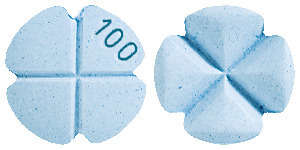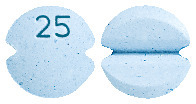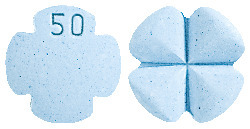SUMMARY CMI
Sildenafil Sandoz®
Consumer Medicine Information (CMI) summary
The full CMI on the next page has more details. If you are worried about using this medicine, speak to your doctor or pharmacist.
1. Why am I using Sildenafil Sandoz?
Sildenafil Sandoz contains the active ingredient sildenafil. Sildenafil Sandoz is used to d to treat erectile dysfunction, more commonly known as impotence, in men.
For more information, see Section 1. Why am I using Sildenafil Sandoz? in the full CMI.
2. What should I know before I use Sildenafil Sandoz?
Do not use if you have ever had an allergic reaction to sildenafil or any of the ingredients listed at the end of the CMI.
Talk to your doctor if you have any other medical conditions, take any other medicines, or are pregnant or plan to become pregnant or are breastfeeding.
For more information, see Section 2. What should I know before I use Sildenafil Sandoz? in the full CMI.
3. What if I am taking other medicines?
Some medicines may interfere with Sildenafil Sandoz and affect how it works.
A list of these medicines is in Section 3. What if I am taking other medicines? in the full CMI.
4. How do I use Sildenafil Sandoz?
- Take Sildenafil Sandoz exactly as your doctor has prescribed.
- Your doctor will decide the correct dose for you depending on your condition and response.
More instructions can be found in Section 4. How do I use Sildenafil Sandoz? in the full CMI.
5. What should I know while using Sildenafil Sandoz?
| Things you should do |
|
| Things you should not do |
|
| Driving or using machines |
|
| Drinking alcohol |
|
| Looking after your medicine |
|
For more information, see Section 5. What should I know while using Sildenafil Sandoz? in the full CMI.
6. Are there any side effects?
Tell your doctor or pharmacist if you notice any of the following and they worry you: headache, dizziness, flushing, hot flushes, indigestion, heartburn, nasal or sinus congestion, swelling of your nose, diarrhoea, rash, tightness in your throat, feeling hot or irritable, redness in your mouth or tongue. Tell your doctor or go straight to the Emergency Department if you notice any of the following: unusual heartbeat, persistent headache or fainting, bleeding from the nose, pain or tingling in your hands, toes or feet, red eye(s), swollen, puffy or pain in or around the eye(s), blood in the urine, sudden vision problems, changes to your normal vision, shortness of breath, wheezing or difficulty breathing, swelling of the face, lips, tongue or other parts of the body, chest pain, increased heart rate, seizures, fits or convulsions or your erection is increased, painful or persists for longer than four hours.
For more information, including what to do if you have any side effects, see Section 6. Are there any side effects? in the full CMI.
FULL CMI
Sildenafil Sandoz®
Active ingredient(s): sildenafil (as citrate)
Consumer Medicine Information (CMI)
This leaflet provides important information about using Sildenafil Sandoz. You should also speak to your doctor or pharmacist if you would like further information or if you have any concerns or questions about using Sildenafil Sandoz.
Where to find information in this leaflet:
1. Why am I using Sildenafil Sandoz?
2. What should I know before I use Sildenafil Sandoz?
3. What if I am taking other medicines?
4. How do I use Sildenafil Sandoz?
5. What should I know while using Sildenafil Sandoz?
6. Are there any side effects?
7. Product details
1. Why am I using Sildenafil Sandoz?
Sildenafil Sandoz contains the active ingredient sildenafil (as citrate). Sildenafil Sandoz belongs to a group of medicines called phosphodiesterase type 5 (PDE5) inhibitors.
Sildenafil Sandoz is used to treat erectile dysfunction, more commonly known as impotence, in men. This is when a man cannot get, or keep, a hard erect penis suitable for sexual activity.
It works by relaxing the blood vessels in your penis when you are sexually excited. This allows blood to flow into your penis, allowing you to get an erection in the natural way.
Sildenafil Sandoz will not increase your sex drive and will work only if you are sexually excited.
Sildenafil Sandoz is not for use in women.
2. What should I know before I use Sildenafil Sandoz?
Warnings
YOU MUST NOT TAKE SILDENAFIL SANDOZ IF YOU ARE TAKING NITRATES OR NITRITE MEDICATIONS. IT MAY LEAD TO A SEVERE DROP IN YOUR BLOOD PRESSURE, WHICH MAY BE DIFFICULT TO TREAT.
BECAUSE SEXUAL ACTIVITY MAY PLACE A STRAIN ON YOUR HEART, YOUR DOCTOR WILL NEED TO CHECK WHETHER YOU ARE FIT ENOUGH TO TAKE SILDENAFIL SANDOZ.
Do not use Sildenafil Sandoz if:
- you are allergic to sildenafil or similar medicines, or any of the ingredients listed at the end of this leaflet. An allergic reaction can include:
- hives, itching or skin rash
- swelling of the face, lips or tongue which may lead to difficulty swallowing or breathing.
Always check the ingredients to make sure you can use this medicine. - you are being treated for angina (chest pain) or other heart conditions with medicines called nitrates. These are available in multiple dosage forms, such as tablets, patches, sprays and injections. These include but not limited to:
- glyceryl trinitrate (also called nitroglycerin)
- isosorbide mononitrate, isosorbide dinitrate
- nicorandil
- sodium nitroprusside. - you are taking guanylate cyclase stimulators (GCS), such as riociguat
GCS is a type of medicine used to treat high blood pressure in the blood vessels in the lungs caused by blood clots in the lungs (chronic thromboembolic pulmonary hypertension or CTEPH) or narrowing of the vessels that carry blood from the heart to the lungs (pulmonary arterial hypertension or PAH). - you have heart or blood vessel problems that make sexual intercourse inadvisable
- you have suffered a heart attack or stroke in the last 6 months
- you have severe liver problems
- you have blood pressure that is unusually high or low or is not effectively treated
- you have sudden vision problems including loss of vision in one or both eyes from an eye disease called non-arteritic anterior ischaemic optic neuropathy (NAION)
- you have an eye disease called retinitis pigmentosa
- the packaging is torn or shows signs of tampering, or does not look quite right even if the tablets may look alright
- the expiry date on the pack has passed
If it has expired or is damaged, return it to your pharmacist for disposal.
Check with your doctor if you:
- have any allergies to any other medicines or any other substances such as foods, preservatives or dyes
- have any other heart or blood vessel problems
- have previously had sudden vision problems including blurred, decreased or distorted vision, objects appear smaller or further away than they are, changes to colour vision, loss of eyesight in one or both eyes
- have any of the following medical conditions:
- diabetes, especially if you also have eye problems
- kidney or liver problems
- leukaemia (cancer of the blood cells)
- multiple myeloma (a cancer of the bone marrow)
- any disease or deformity of your penis
- any bleeding disorder such as haemophilia
- stomach ulcer
- a disease of the blood called sickle cell anaemia
- colour vision problems
- previously experienced sudden decrease or loss of hearing - are taking or using any other treatment for impotence
- are taking any medicines to treat high blood pressure in the vessels of the lungs (pulmonary arterial hypertension) including bosentan or Revatio which also contains sildenafil
- have any other medical conditions.
If you have not told your doctor or pharmacist about any of the above, tell them before you start taking Sildenafil Sandoz.
During treatment, you may be at risk of developing certain side effects. It is important you understand these risks and how to monitor for them. See additional information under Section 6. Are there any side effects?
3. What if I am taking other medicines?
Tell your doctor or pharmacist if you are taking any other medicines, including any medicines, vitamins or supplements that you buy without a prescription from your pharmacy, supermarket or health food shop.
Do not take Sildenafil Sandoz if you are taking or using nitrate medicines for angina.
Do not take Sildenafil Sandoz if you are taking guanylate cyclase stimulators (GCS), such as riociguat.
Some medicines and Sildenafil Sandoz may interfere with each other. These include:
- cimetidine, a medicine used to treat ulcers
- some medicines used to treat fungal infections including ketoconazole and itraconazole
- some antibiotics including erythromycin and rifampicin
- some protease inhibitors such as ritonavir and saquinavir for the treatment of HIV infection
- medicines called alpha-blockers. These are used to treat high blood pressure or prostate problems
- bosentan, a medicine used to treat high blood pressure in the vessels of the lungs.
You may need different amounts of your medicine or you may need to take different medicines. Your doctor or pharmacist can tell you what to do if you are taking any of these medicines. They also have a more complete list of medicines to be careful with or avoid while taking Sildenafil Sandoz.
Check with your doctor or pharmacist if you are not sure about what medicines, vitamins or supplements you are taking and if these affect Sildenafil Sandoz.
4. How do I use Sildenafil Sandoz?
Take Sildenafil Sandoz exactly as your doctor has prescribed.
Follow all directions given to you by your doctor and pharmacist carefully.
They may differ from the information contained in this leaflet.
If you do not understand the instructions on the box, ask your doctor or pharmacist for help.
How much to take
- Your doctor will decide the correct dose for you depending on your condition and response.
- This can be either one 25 mg tablet, one 50 mg tablet, or one 100 mg tablet per day.
- Do not take more than one dose of Sildenafil Sandoz a day.
How to take Sildenafil Sandoz
Swallow the tablet with a full glass of water.
Sildenafil Sandoz tablets have a breaking notch and may be broken if necessary
When to take Sildenafil Sandoz
- Take your dose of Sildenafil Sandoz about one hour before you intend to have sex.
- The amount of time Sildenafil Sandoz takes to start working varies from person to person, but it normally takes between half an hour and one hour.
- You may find Sildenafil Sandoz takes longer to work if you take it with a heavy meal.
- Sildenafil Sandoz will work only if you are sexually excited.
If you take too much Sildenafil Sandoz
If you think that you or anyone else may have taken too much Sildenafil Sandoz, you may need urgent medical attention.
You should immediately:
- phone the Poisons Information Centre
(by calling 13 11 26), or - contact your doctor, or
- go to the Emergency Department at your nearest hospital.
You should do this even if there are no signs of discomfort or poisoning.
5. What should I know while using Sildenafil Sandoz?
Things you should do
- Stop taking Sildenafil Sandoz if you have sudden vision problems including blurred, decreased or distorted vision, objects appear smaller or further away than they are, changes to colour vision, loss of eyesight in one or both eyes, experience loss of hearing or have an erection that persists for more than 4 hours. Seek medical attention urgently.
- If Sildenafil Sandoz does not help you get an erection or if your erection does not last long enough to complete sexual intercourse, tell your doctor.
- In these cases, your doctor may decide that you need a higher dose.
- If you are about to start taking any new medicines, especially nitrates, or riociguat, tell your doctor and pharmacist that you are taking Sildenafil Sandoz.
- See Section 2. What should I know before I use Sildenafil Sandoz? for a list of common nitrate medications.
- Tell any other doctors, dentists and pharmacists who are treating you that you are taking Sildenafil Sandoz.
Things you should not do
- Do not use drugs containing amyl nitrite (sometimes called "poppers") while you are taking Sildenafil Sandoz.
- If you get an angina attack do not take nitrate medicines to relieve the pain but tell your doctor immediately. Make sure your doctor knows you are taking Sildenafil Sandoz.
- Do not give Sildenafil Sandoz to anyone else, even if they have the same condition as you.
Driving or using machines
Be careful before you drive or use any machines or tools until you know how Sildenafil Sandoz affects you.
If you experience changes in vision, or dizziness when taking Sildenafil Sandoz, you should not drive or operate machinery
Drinking alcohol
Be careful drinking alcohol while taking Sildenafil Sandoz.
Drinking alcohol can temporarily impair the ability to get an erection.
Do not drink large amounts of alcohol before sexual activity.
Looking after your medicine
- Store below 30°C
- Keep the tablets in their pack until it is time to take them. If you take your tablets out of the pack, they will not keep as well.
Follow the instructions in the carton on how to take care of your medicine properly.
Store it in a cool dry place away from moisture, heat or sunlight; for example, do not store it:
- in the bathroom or near a sink, or
- in the car or on window sills.
Heat and dampness can destroy some medicines.
Keep it where young children cannot reach it.
A locked cupboard at least one-and-a-half metres above the ground is a good place to store medicines.
Getting rid of any unwanted medicine
If you no longer need to use this medicine or it is out of date, take it to any pharmacy for safe disposal.
Do not use this medicine after the expiry date.
6. Are there any side effects?
While Sildenafil Sandoz helps most people, it can cause some unwanted side effects in a few people. All medicines can have side effects. If you do experience any side effects, most of them are minor and temporary. However, some side effects may need medical attention.
Tell your doctor or pharmacist as soon as possible if you do not feel well while you are taking Sildenafil Sandoz.
See the information below and, if you need to, ask your doctor or pharmacist if you have any further questions about side effects.
Do not be alarmed by this list of possible side effects.
You may not get any of them.
Less serious side effects
| Less serious side effects | What to do |
Nervous system related:
| Speak to your doctor if you have any of these less serious side effects and they worry you. |
Serious side effects
| Serious side effects | What to do |
Heart related:
| Call your doctor straight away if you notice any of these serious side effects. |
Very serious side effects
| Very serious side effects | What to do |
Allergy related:
| Call your doctor straight away, or go straight to the Emergency Department at your nearest hospital if you notice any of these very serious side effect. |
Tell your doctor or pharmacist if you notice anything else that may be making you feel unwell or if you don't understand anything in this list.
This is not a complete list of all possible side effects. Other side effects not listed here may occur in some people.
Reporting side effects
After you have received medical advice for any side effects you experience, you can report side effects to the Therapeutic Goods Administration online at www.tga.gov.au/reporting-problems. By reporting side effects, you can help provide more information on the safety of this medicine.
Always make sure you speak to your doctor or pharmacist before you decide to stop taking any of your medicines.
7. Product details
This medicine is only available with a doctor's prescription.
What Sildenafil Sandoz contains
| Active ingredient (main ingredient) | sildenafil (as citrate) equivalent to 25 mg, 50 mg or 100 mg sildenafil per tablet |
| Other ingredients (inactive ingredients) | microcrystalline cellulose calcium hydrogen phosphate anhydrous copovidone croscarmellose sodium magnesium stearate sodium saccharin indigo carmine (E132) aluminium lake. |
Do not take this medicine if you are allergic to any of these ingredients.
What Sildenafil Sandoz looks like
Sildenafil Sandoz tablets are available in three strengths:
Sildenafil Sandoz 25mg - light blue, slightly dotted, round tablets, with a breaking notch and marked "25". Available in blisters of 4 tablets (AUST R 148570).
Sildenafil Sandoz 50mg - light blue, slightly dotted, round tablets, with a cross breaking notch and marked "50". Available in blisters of 4 and 12 tablets (AUST R 148567).
Sildenafil Sandoz 100mg - light blue, slightly dotted, round tablets, with a cross breaking notch and marked "100". Available in blisters of 4 and 12 tablets (AUST R 148568).
Who distributes Sildenafil Sandoz
Sandoz Pty Ltd
100 Pacific Highway
North Sydney, NSW 2060
Australia
Tel 1800 726 369
This leaflet was prepared in January 2025.
® Registered Trade Mark. The trade marks mentioned in this material are the property of their respective owners.
Published by MIMS March 2025




 Other adverse reactions occurred at a rate of > 2%, but equally commonly on placebo: respiratory tract infection, back pain, flu syndrome and arthralgia.
Other adverse reactions occurred at a rate of > 2%, but equally commonly on placebo: respiratory tract infection, back pain, flu syndrome and arthralgia.
